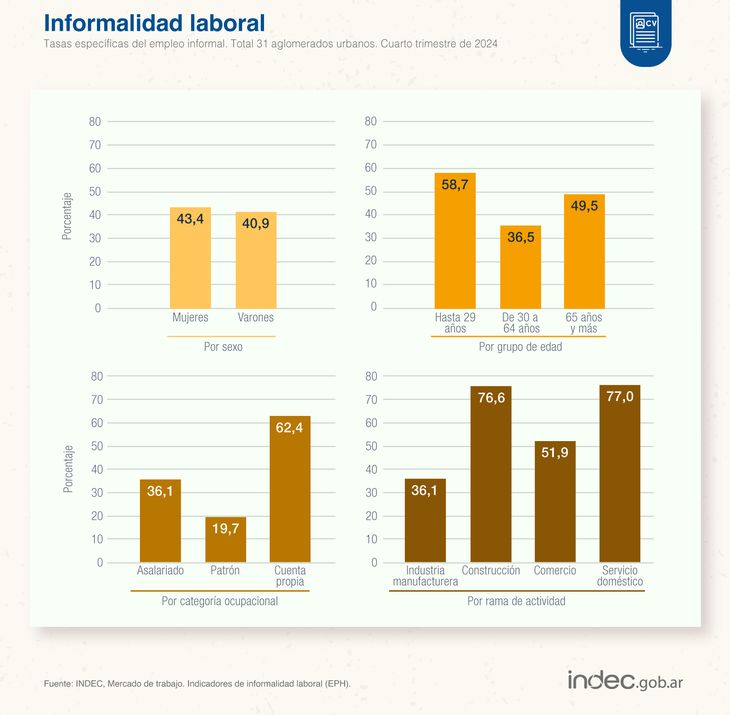In your new report of Labor informalityhe National Institute of Statistics and Census (INDEC) He revealed that Employment rate reached 45.7% in the fourth quarter within 31 urban agglomerates. Of them, the 42% workers do not have labor rightswhile the 57.8% are under formality parameters. It is a slight rise compared to the same period last year (41.4%).
To have an x -ray of what would be nationally, if it was extrapolated to the total population, this would imply that 21,509,912 workers, some 9,034,163 would be in informality conditions and 12,475,749 remaining would correspond to the formal.
In that sense, the researcher Luis Camposspecialist in labor issues, said the INDEC report, although he explained to Scope that this informality index does not take into account a key factor that is the rural populationsince it is carried out based on the permanent survey of households of the urban population. “For this issue, the rural sector is also very important,” due to the high informality index that they handle in those tasks.
So and everything, he assured that “The fact of being able to see informality beyond employees is already a lot”.
Of the most remarkable data, beyond the informality rate outside the wage earners, which amazes that it reaches almost 70% of self -employed workers; It is observed that Young employment also has an alarming informality rate, as well as private houses and construction between the branch of activities.
Rural women.png
Within informal workers, “employed persons, whether independent or in dependency relationship, which develop their activities outside the regulations that regulate them,” clarifies the report.
Labor Informality: More than 60% of the Propistas Account does not have discounts
In the disaggregated by working form, it stands out that The informality rate reached 62.4% of workers who accountwhile it is 35.8% among employees (data that was known) and 19.7% among patterns.
In that line, the sociologist Daniel Schteingart He stressed that it was “Very necessary” This report, since “until then, we could only know it for wage earners, which was approximately 75% of those employed. Now we can also meet it for non -salaried, which is approximately the remaining 25%.”
Among women, the informality rate is also higher: 43.4% of employees do not have salary discounts, while among men the threshold yields to 40.9%.
INDEC INFORMALITY.JPG

The most beaten age range is that of young people who up to 29 years have an informality index of 58.7%while among adults over 65 and over they are 49.5% informality and in the range of 30 to 64 yields to 36.5%.
“While informality among young people does not surprise, it is still one of the most important data”said Campos.
Among the branches of activity, the domestic service is the one with the highest informality rate, reaching 77% of workers, while in construction it reaches 76.6% of employees and in 51.9% trade. The industry has the least number of workers not registered with 36.1%.
In addition, it stands out within this report that informality decreases according to the educational level of the worker: among employees with a higher level of studies and complete university the informal occupation is 10.4%, while for those who only have the full secondary, it reaches 32.4%.
Source: Ambito




